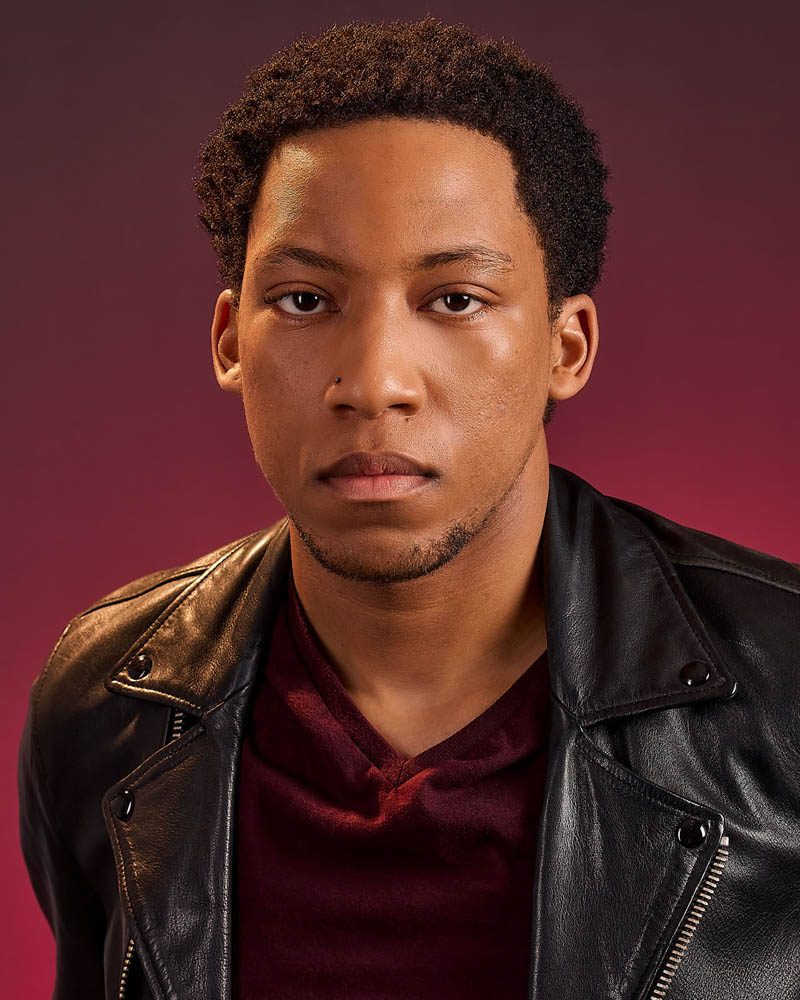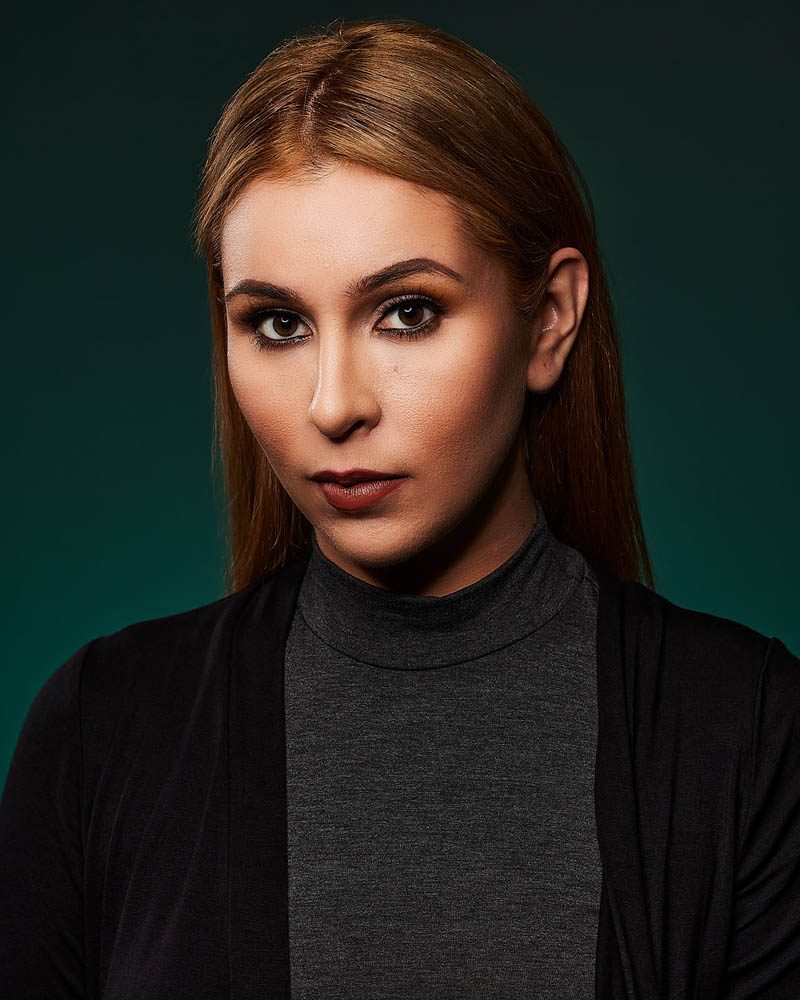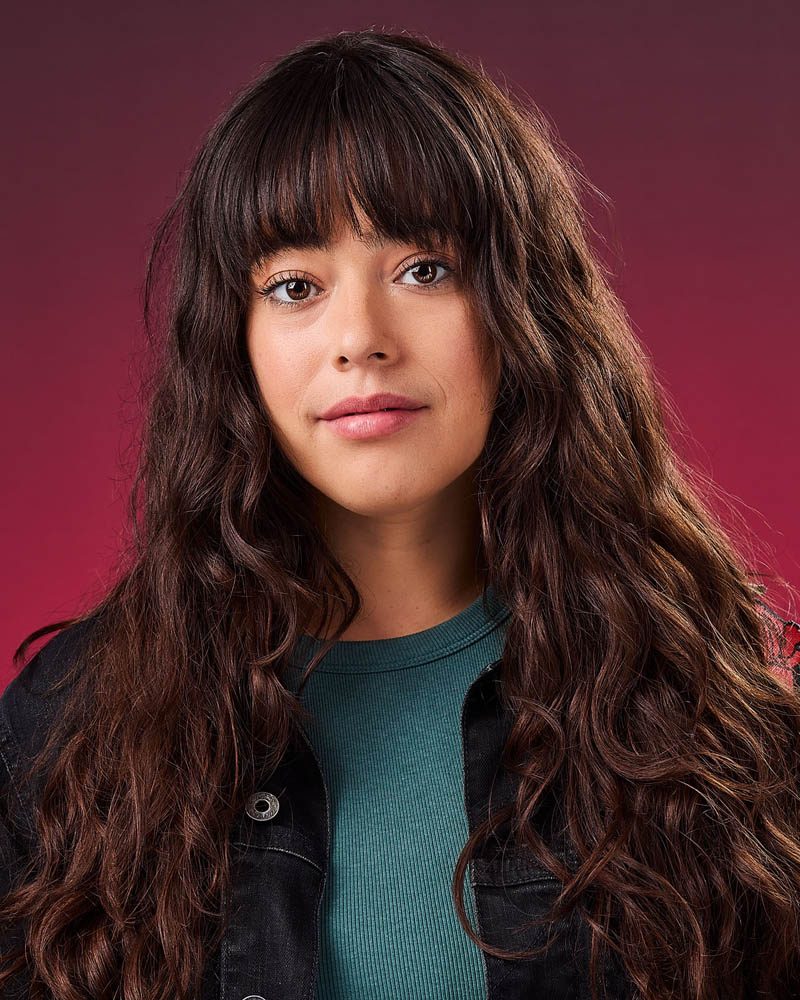The Difference in Wardrobe
What to wear with a theatrical versus commercial shot also matters. Because it’s a headshot, just the top is essential. Many commercial head shots are with a very basic shirt and one that is minimalist in patterns or other busy elements. It can be used to create contrast with the background.
For the theatrical shot, using layers is common. For example, going from the commercial wardrobe to the theatrical one might be as simple as tossing on a jacket. This could be a leather jacket over a gray, red or blue shirt, for example. It might be going from a basic t-shirt in a commercial look to a button-up shirt for the theatrical one. A pop of color somewhere – the shirt or jacket – will often be helpful, though some actors will love the feel of mostly black outfits.
The Photographer for Theatrical Looks
To help ensure getting useful theatrical headshots, it’s important for an actor to make sure the photographer of their choice has the lighting equipment, and understanding of how to use it, to create a theatrical mood in a shot. This is much easier done with studio lighting than with natural light.
With natural light, the photographer will likely need to make use of equipment to control how the sunlight is hitting the actor, or not hitting the actor. Therefore, a studio setting is the most ideal setting for creating theatrical headshots.
Battling the elements to try and get a clear theatrical look can be troublesome. Much of how they turn out can depend on the time of day you booked your session. And then, on that particular day and time, is it too cloudy or not cloudy enough? Is the wind blowing and likely to make a mess of your hair?
Then there are location-specific obstacles that can pop up. Depending on your outdoor shoot location, will traffic be bothersome – not just car traffic but people traffic? Perhaps there is unplanned for construction where you planned to shoot? Maybe that wall you planned to use now has a fresh coat of pink paint or noisy graffiti on it. A studio setting avoids such obstacles. This is not to say a good theatrical headshot cannot be had in natural light. It is just that more planning and adapting to unplanned changes will be needed.
Actors need many shots in their portfolio and ensuring some theatrical headshots are part of it is a sure-fire way to help broaden how they might appeal to casting directors. In addition, one never knows which way the wind blows, meaning while an actor might think their future is seeded in a commercial look, a casting director might instead see an actor in more dramatic roles. So, having many looks helps ensure more opportunities for success. Before moving on to other points, here is a quick list of things to look for in a photographer if you want clear-cut commercial and theatrical looks.
- Does the photographer have a true commercial studio?
- Can the photographer do studio lighting and natural lighting?
- Can the photographer use three or more studio lights at a time?
- For natural light, where would they shoot and why there?
- Does the photographer recommend a specific time of day and why?
Also, you will want to take a look at headshots for acting in Los Angeles, and other locations, that they have done. Most commercial photographers will have a website readily available with recent images.
Straddling the Line Between a Commercial and Theatrical Look
It is typically advised that an actor have no less than two headshots and not more than seven. While how many headshots you need is not a science, somewhere in between here is good.
So, if four to five headshots are a good idea, it stands that in most cases, actors will want at least a couple of commercial and a couple of theatrical looks. So, a fifth option might be one that blends the line between these two looks.
The reason this might be helpful, if you and your chosen photographer can pull it off, is because if you do it right you might have created a headshot that is truly multi-purpose.





